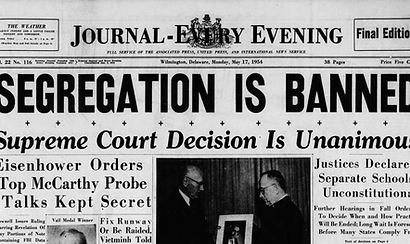Legal
Victories

Legal Challenges
As the Montgomery Bus Boycott continued, white city leaders responded with intense resistance. They arrested people who helped organize carpools, used lawsuits to try to break up the movement, and even arrested Black citizens for minor offenses to intimidate them (Robinson, 1987, p. 84). These legal and political attacks were meant to weaken the boycott and scare the Black community into stopping. But instead of giving up, the community stayed strong and pushed forward with a new plan. Ultimately, this was challenging segregation in the courts.

Supreme Court Decision
The legal battle reached a turning point on June 5, 1956, when a federal court ruled that segregation on Montgomery buses was unconstitutional. The city of Montgomery appealed the ruling, but the case went all the way to the U.S. Supreme Court, which upheld the decision. On December 20, 1956, the ruling was officially enforced, bringing the 381-day boycott to an end.
Impact on Segregation Nationwide

The Supreme Court’s decision didn’t just end bus segregation in Montgomery; it set a powerful legal precedent for the rest of the country. The victory showed that segregation could be successfully challenged in court and that community organizing and legal action could work together to create real change. The Montgomery Bus Boycott became a model for future civil rights campaigns across the South, inspiring other movements to challenge racial injustice on a national scale.



